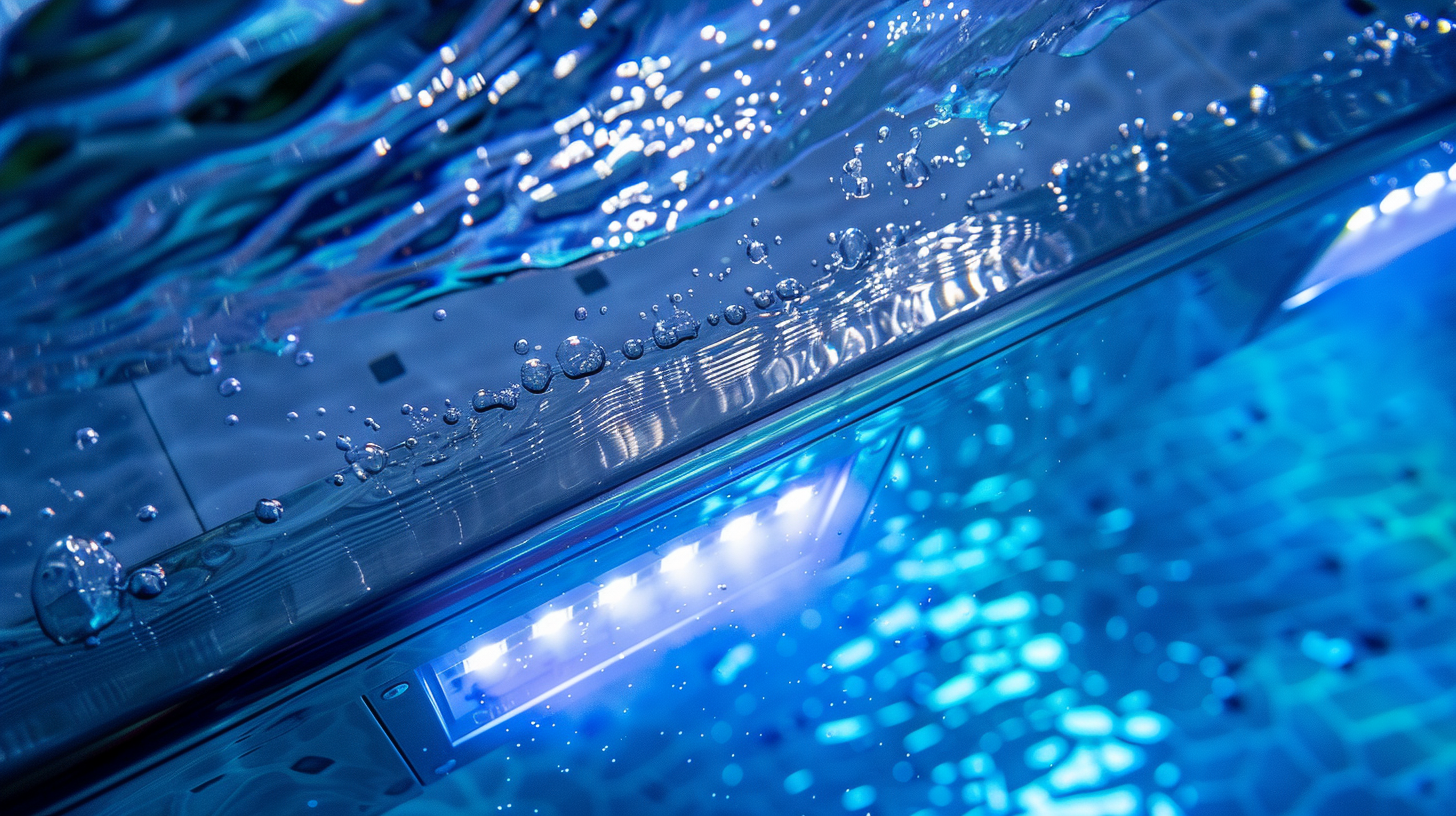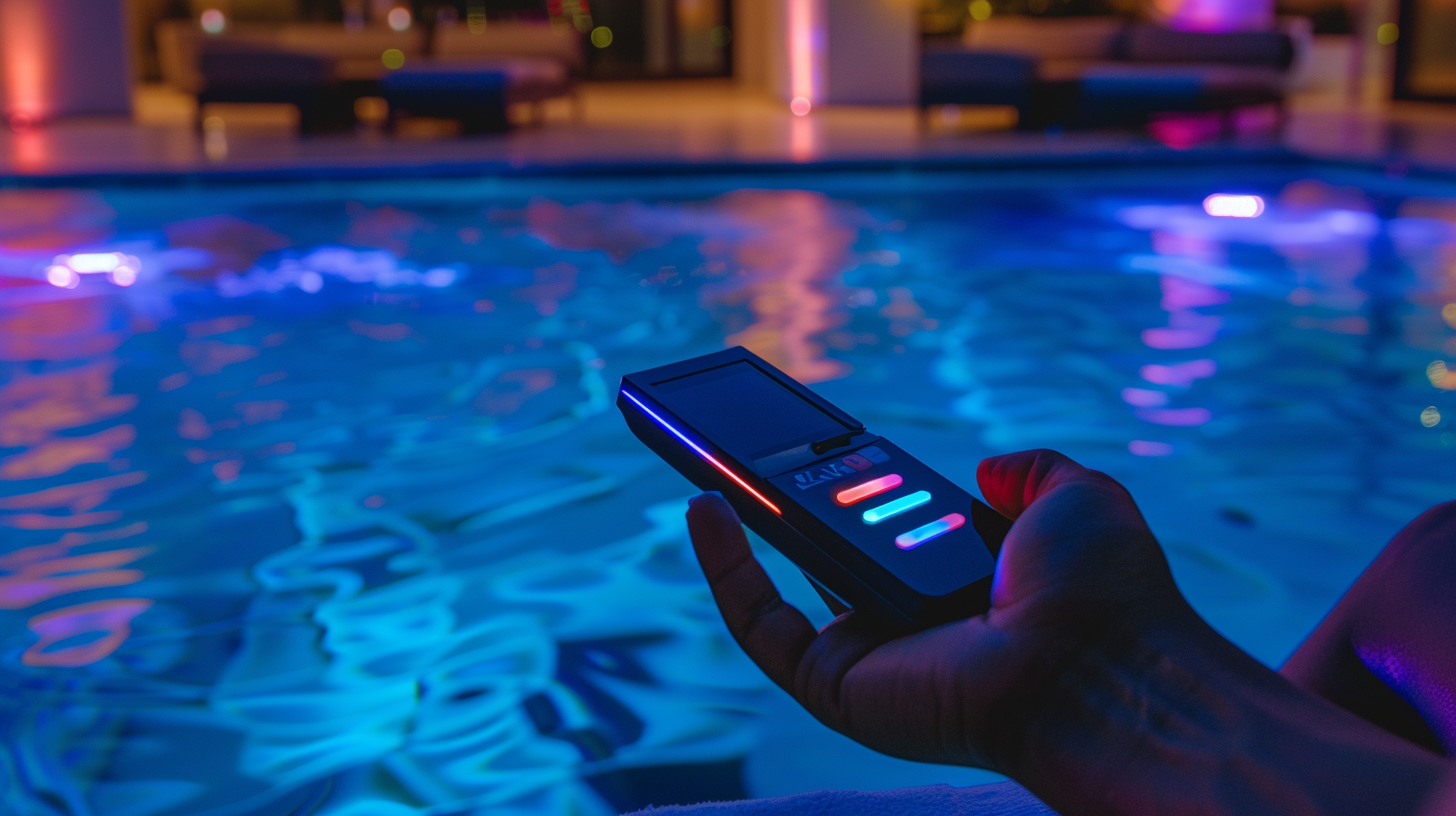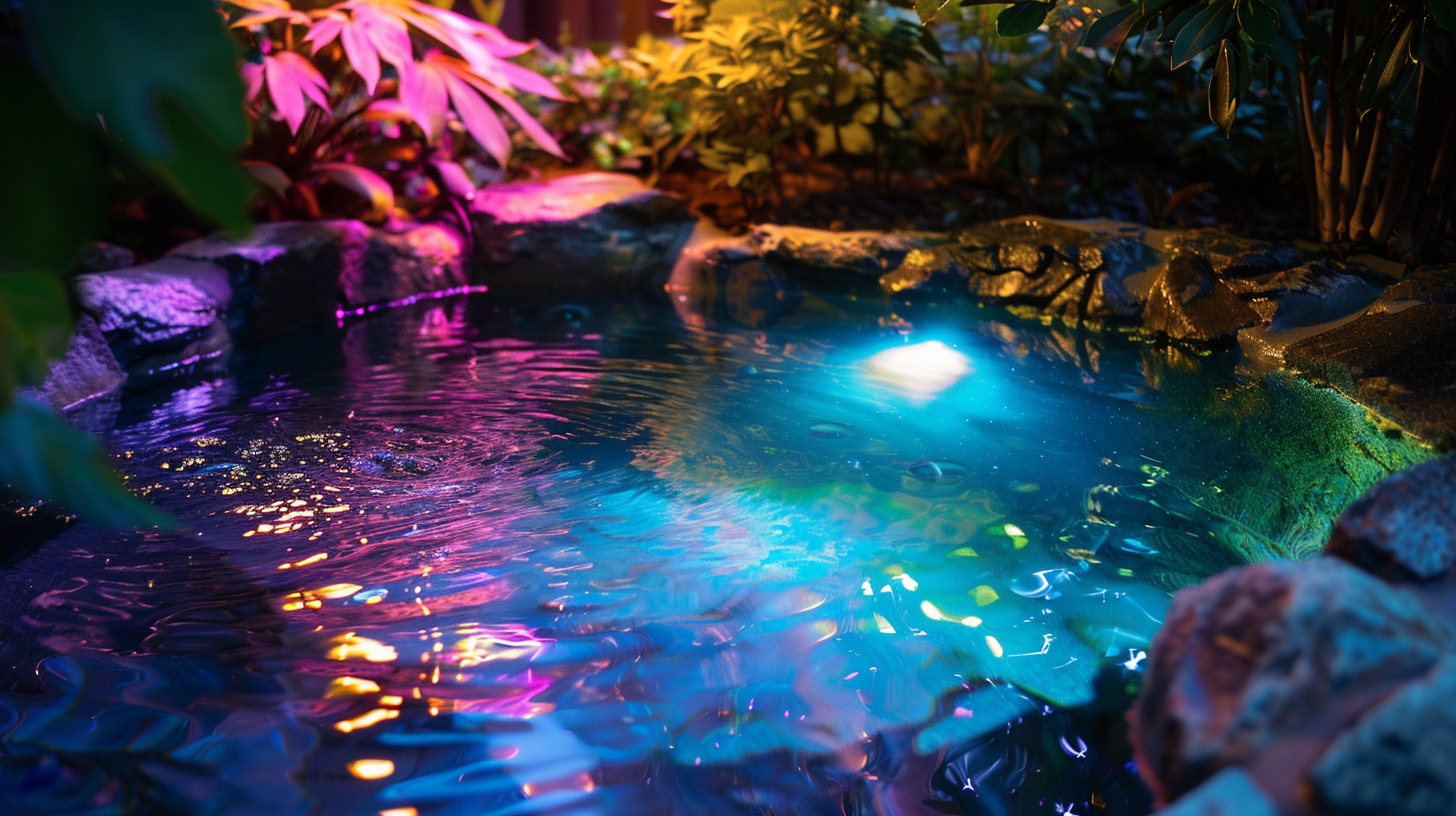Selecting underwater pool lights for saltwater pools
When it comes to selecting pool lights for saltwater pools, understanding the unique challenges posed by these environments is crucial. Saltwater pools, while luring with their gentle buoyancy and reduced need for harsh chemicals, bring their own set of demands that vary from traditional chlorine pools. The saline nature of the water can accelerate corrosion and scaling, making the choice of lighting fixtures a pivotal decision. Salt, though beneficial in many ways, is a notorious agent for rust and deterioration, particularly if the pool lights are not crafted from resistant materials.
Moreover, there is often a misunderstanding that any pool light will suffice irrespective of the type of pool. This is far from the truth because the saline content in saltwater pools demands pool lights designed explicitly to withstand the corrosive properties. A deep dive into the intricacies of saltwater environments reveals that the roles of protective coatings and robust material compositions are not just additional features—they are essential aspects.
An additional challenge posed by these pools is the potential for electrical failure due to saline conductivity. Hence, selecting pool lights with superior insulation becomes paramount. When pool owners ignore these unique challenges, they risk frequent light replacements and more substantial maintenance costs. Understanding these particulars ensures that the magic of underwater illumination remains untarnished, allowing swimmers to indulge in an extraordinary visual experience without the shadow of premature wear and tear.
Materials and finishes suitable for saltwater pools
When selecting pool lights for saltwater pools, particular attention must be given to the materials and finishes used in their construction. Stainless steel, specifically marine-grade 316, is one of the most popular choices due to its superior resistance to rust and corrosion. Unlike lower grades of stainless steel, marine-grade 316 contains molybdenum, which significantly enhances its ability to withstand the harsh effects of saltwater. This durability ensures that the pool lights retain their aesthetic appeal and functionality over an extended period.
Another excellent material choice is bronze, especially silicone bronze, known for its exceptional strength and anti-corrosive properties. The caramel-like patina that develops over time adds a touch of sophistication to the pool’s appearance, blending magically under the water’s surface. However, while bronze is stylish and robust, it does come with a heftier price tag, making it a premium choice for discerning pool owners.
For those looking for a more budget-friendly yet resilient option, high-quality plastics or thermoplastics can also serve well. These materials are non-corrosive and resistant to UV rays, which prevents them from cracking or becoming brittle over time. Advances in manufacturing technology have significantly improved the durability and visual appeal of thermoplastic pool lights, making them a viable contender in the market.
Equally important is the finish of the pool lights. Anodized finishes create a protective oxide layer on metals like aluminum, significantly reducing the risk of corrosion and extending the life of the light. Powder-coated finishes are another excellent option, providing a durable and attractive layer that helps prevent damage from saline exposure. Glossy powder coatings, in particular, amplify the underwater sparkle, enhancing the nighttime swimming experience.
Chemical coatings that offer additional layers of protection are also gaining traction. PVD (Physical Vapor Deposition) coatings, for example, can provide an exceptionally hard surface that resists wear, tarnish, and corrosion. These coatings come in various colors and finishes, allowing pool owners to select the one that best complements their pool environment.
When weighing your options, it’s crucial to consider not just the initial cost but the long-term benefits of durable materials and finishes. Investing in high-quality pool lights, expertly designed to withstand the rigors of saltwater pools, can save significant time and money on replacements and maintenance. This ensures that you can continue enjoying the mesmerizing underwater illumination without interruption. Therefore, a meticulous selection process that prioritizes materials and finishes suited for saltwater pools is essential for a seamless and enduring lighting experience.
Safety and compliance considerations
A critical aspect to consider when selecting pool lights for saltwater pools is ensuring they meet stringent safety standards and comply with relevant regulations. First and foremost, pool lights must be designed to be fully sealed and waterproof, preventing any chance of water ingress. This is particularly important in saltwater environments, where even the smallest breach can lead to corrosion and electrical failures over time. Ensuring your lights are rated IP68, the highest level of water resistance, guarantees they are suitable for continuous submersion in water.
Equally important is verifying that the lighting system adheres to industry standards set by organizations such as UL (Underwriters Laboratories) or CE (Conformité Européenne). These certifications indicate that the pool lights have undergone rigorous testing and meet safety requirements for electrical products. Compliance with these standards helps to minimize the risk of electrical hazards, providing peace of mind for pool owners.
Another consideration is the voltage of the pool lighting system. Low-voltage lights are generally recommended for pool areas to reduce the risk of electric shock. Systems running on 12V or 24V are typically safer and just as effective in illuminating your pool. In fact, low-voltage lighting is often easier to install and can be more energy-efficient, which is an added bonus for eco-conscious pool owners.
Proper grounding and bonding of the pool lights and electrical components are crucial to ensuring safety. Without adequate grounding, there is a heightened risk of electrical shock, an issue that can be exacerbated by the conductive nature of saltwater. Ensuring your pool’s electrical system is professionally inspected and meeting local code requirements can prevent potentially dangerous situations.
Additionally, the placement and installation of the pool lights should be carefully orchestrated to avoid glare and ensure even illumination throughout the pool area. This not only enhances the aesthetic appeal but also contributes to safe swimming conditions. Poorly positioned lights can create shadows and blind spots, increasing the risk of accidents, especially during night-time swimming sessions.
Safety extends beyond just electrical concerns. Selecting pool lights with appropriate wattage and brightness levels is also vital. Overly bright lights can cause excessive glare, while dim lights may not provide sufficient illumination for safe swimming. LED lights are often favored because they offer excellent brightness with lower energy consumption and heat emissions, making them safer and more sustainable for long-term use.
Maintenance protocols are another crucial aspect of safety. Regularly inspecting the pool lights for signs of wear, corrosion, or water ingress can preemptively address issues before they escalate into safety hazards. Replacing gaskets, cleaning the lenses, and checking the integrity of the waterproof seals should become part of your routine maintenance to ensure your lights continue to function safely and efficiently.
Communicating with a qualified electrician or pool lighting specialist can provide invaluable insights. These professionals can recommend the most suitable options for your specific pool environment, ensuring all safety and compliance considerations are thoroughly addressed. Through careful selection and adherence to safety standards, you can ensure a secure and vibrant underwater lighting setup that enhances your swimming experience in saltwater pools.
Energy efficiency and brightness options
When selecting pool lights for saltwater pools, energy efficiency and brightness are crucial factors to consider. LED lights have emerged as a top choice in this regard, offering superior energy efficiency compared to traditional halogen and incandescent bulbs. LED pool lights consume significantly less power while delivering the same, if not better, levels of brightness. This translates into cost savings on electricity bills, particularly for pool owners who keep their lights on for extended periods.
LEDs are available in various color temperatures and brightness levels, allowing customization of the underwater ambiance. The color temperature is measured in Kelvin (K), with lower numbers indicating warmer, yellower light, and higher numbers denoting cooler, bluer light. For a warm, inviting glow, LEDs with a color temperature around 3000K are ideal, while for a more vibrant, cooler ambiance, 5000K LEDs are preferable.
Another essential consideration is the lumens rating, which measures the total light output. Lumens dictate how bright a light will be. For underwater pool lights, a range of 1,000 to 4,000 lumens is generally recommended, depending on the size and depth of the pool. A well-lit pool not only enhances night-time visibility but also contributes to the overall safety and aesthetic appeal.
Many LED pool lights also come with advanced features like dimming capabilities and color-changing options. These features allow pool owners to adjust the lighting to suit different occasions—whether it’s a relaxing evening swim or a lively pool party. Remote control systems or smartphone apps often manage these features, providing convenience and enhancing the user experience.
When it comes to selecting energy-efficient options, it’s also worth considering the beam angle of the pool lights. A wider beam angle (90-120 degrees) ensures more uniform light distribution, reducing the number of lights needed to illuminate larger pools effectively. This further enhances energy savings as fewer units can achieve the desired brightness levels.
Comparison of Lighting Options:
| Type | Energy Efficiency | Brightness (Lumens) | Color Temperature (K) | Additional Features |
|---|---|---|---|---|
| LED | Very High | 1,000-4,000 | 3,000-5,000+ | Dimmable, Color Changing |
| Halogen | Moderate | 1,500-3,500 | 2,700-3,000 | None |
| Incandescent | Low | 1,000-2,500 | 2,500-2,700 | None |
Beyond LEDs, halogen lights are another option, though they are less energy-efficient and often have a shorter lifespan. Halogen bulbs emit a bright, white light that many find appealing, but they consume more power and generate more heat, which can be a drawback in energy-conscious setups.
Lastly, incandescent lights, though the least efficient and most outdated option, are still used in some older pool setups. They provide a warm light but at the cost of higher energy use and frequent bulb replacements. As technology advances, many pool owners are transitioning from these traditional options to more energy-efficient LED solutions.
In summary, selecting the right pool lights for your saltwater pool involves balancing energy efficiency and brightness to create the desired underwater effect. LED lights stand out for their energy-saving properties, customizable brightness levels, and advanced features, making them a preferred choice for modern pool lighting systems.
Installation and maintenance tips
Proper installation of pool lights is crucial for both functionality and longevity, especially in the demanding environment of saltwater pools. Begin by ensuring that all electrical connections are made outside the water, in a dry area where cables are more secure from exposure to moisture. This precaution significantly reduces the risk of water ingress, which can lead to corrosion or electrical short-circuits over time. Using waterproof connectors and junction boxes can provide an additional layer of security, helping to keep your electrical system running smoothly.
Make sure to follow the manufacturer’s instructions closely during the installation process. Each type of pool light may have specific requirements, and adhering to these guidelines is essential for optimal performance and safety. For instance, certain LED pool lights may need specific types of gaskets or O-rings to maintain their waterproof seals, so double-checking these details can prevent future issues.
When mounting the lights, consider the placement carefully. Even distribution around the pool’s perimeter ensures consistent illumination without dark spots, contributing to both the safety and visual appeal of the swimming area. Additionally, position the fixtures at a depth that best showcases their capabilities without straining the light output. Most pool lights perform best at depths between 12 to 24 inches, depending on the size and shape of your pool.
Maintenance is another critical aspect to keep your pool lights in prime condition. Regularly inspect the lights for any signs of wear or damage. This includes checking for cracks in the lenses, ensuring the integrity of waterproof seals, and examining the exterior housing for signs of corrosion. Early detection of potential issues can save both time and money by addressing them before they escalate.
Cleaning the lights periodically is also important, particularly in saltwater pools where the saline content can lead to calcium buildup and scaling. Use a soft brush and a solution of water and mild detergent to gently scrub away any deposits on the light fixtures. Avoid using abrasive materials or chemicals, as these can damage the finishes and reduce the lifespan of the lights. Rinsing the lights thoroughly after cleaning helps to remove any remaining cleaning agents that might affect the materials.
It’s also advisable to check the electrical components periodically. Make sure the connections remain tight and free from corrosion. Applying a small amount of dielectric grease to the connectors can provide additional protection against moisture and corrosion, enhancing the longevity of the electrical connections.
For those going through seasonal changes where pool use decreases, consider removing the lights during the off-season to preserve them. This also gives you an opportunity to perform a more thorough inspection and cleaning, ensuring they are in top shape for the next swimming season.
In cases where pool lights need to be replaced, be sure to purchase fixtures specifically rated for saltwater pools. This ensures compatibility with the pool environment and reduces the likelihood of premature failure. Seeking professional assistance for both installation and maintenance tasks can also be highly beneficial. Qualified electricians and pool technicians bring specialized knowledge and experience, helping to prevent common pitfalls and ensuring that your pool lights operate safely and effectively.
Incorporating these installation and maintenance practices will not only extend the life of your pool lights but also ensure that your saltwater pool remains a beautifully illuminated oasis for years to come.


